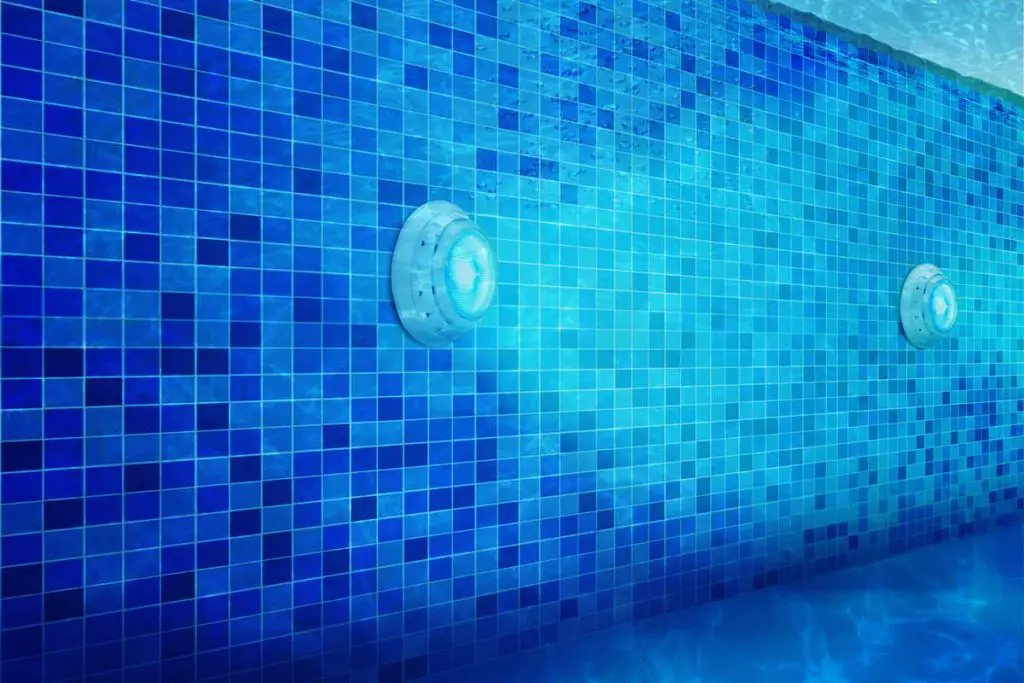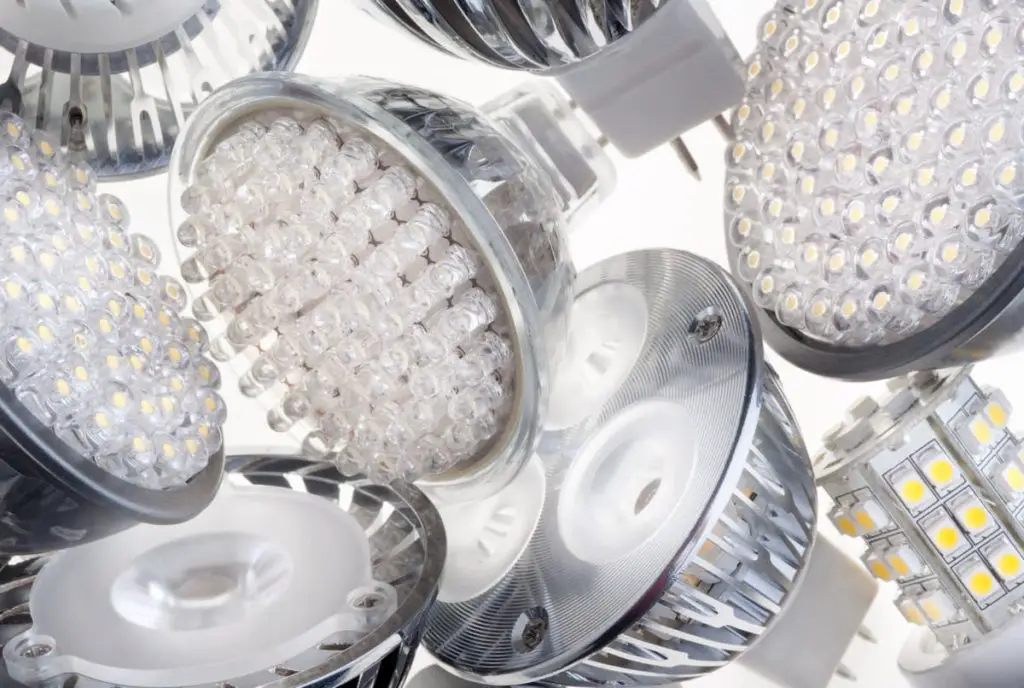It can be an incredible experience to swim in a pool after the sun has set, especially if your pool has LED lights that illuminate the water. However, your after-dark swimming time can be less fun if the LED pool lights aren’t bright enough.
If your LED pool light isn’t bright enough, this might be because the light fixture is loose or water has leaked into the housing unit. In addition, electrical issues such as wire continuity problems or a tripped circuit breaker can cause LED pool lights to dim or even extinguish completely.
This article will discuss why LED pool lights dim and fail to illuminate the water. I’ll also talk about some easy ways to fix a dimming LED pool light and when it’s time to call an electrician to take a closer look.

Why Your LED Pool Lights Are Dimming
LED pool lights are excellent low-cost lighting that beautifully illuminates the water. These lights come in various colors, and many LED lights can create any color you can imagine. Unfortunately, as with any light bulb, LED lights can dim or go out entirely, resulting in a dark pool that is less inviting after dark.
Before we talk about fixing your LED pool lights, let’s take a closer look at some of the reasons why an LED pool light can dim.
Loose Light Fixture
One of the most common reasons LED pool lights can dim a loose light fixture. Pools can be a busy and active place, especially if your family and guests love to jump in the water and splash about.
These pool activities can cause the light fixture to become loose, thus causing the LED lights to dim as a result.
Leaky Light Housing
Another common cause for dimming lights is a leaky light housing unit. All underwater pool lights are located behind a lens and a waterproof gasket. These two parts create a watertight seal that prevents the pool water from entering the housing structure.
However, the rubber on the gasket can erode over time as it is exposed to the strong chemicals that keep pools clean, such as chlorine. When this erosion happens, water can enter the housing unit and cause the light to short out.
This water may also trip the circuit breaker or GFCI (Ground Fault Circuit Interrupter). Tripping either of these will cause the electricity to be cut off from that specific light or even the whole pool.
LED Light Is Dying
One of the things that LED lights are best known for is their long running time. LED lights to last 30 times longer than a traditional incandescent bulb, making them an excellent choice for areas that are hard to access, such as underwater in a pool.
However, this long-running time doesn’t mean that LED lights will last forever. When LED lights get towards the end of their life, they will begin to dim.
Electrical Issues
A final common reason that LED pool lights can dim is electrical issues affecting either that specific light or the entire swimming pool area. These electrical issues may cause lights to dim, but they can also cause them to turn off altogether.
LED pool lights are connected to electricity with a system of wires. Continuity problems with these wires can cause insufficient electricity to be sent to the light or, in some cases, no electricity at all.
Electrical issues can also be caused by a faulty or overloaded circuit breaker or when the GFCI is tripped. A flipped circuit breaker may be caused by an electrical surge or if too much electricity is being drawn in one spot. The GFCI can flip if any water comes in contact with it.
4 Easy Fixes To Brighten LED Pool Lights
If your LED pool lights aren’t bright enough, there are several things you can try to fix the issue. Don’t forget that water and electricity can be a dangerous combination and that you may want to call a licensed electrician for assistance with more complex repairs.
1. Check if the Light Fixture Is Loose
A first and easy check is to determine if the light fixture is loose. You can get into the water and push on the external fixture. This fixture should be secured tightly and not move or wobble when touched.
If the light fixture does wobble, you can fix this by tightening the light fixture. Most fixtures are secured to the wall using a primary lock screw. Use a Phillips head screwdriver to tighten this screw by turning it clockwise. If it appears the screw is stripped, you should replace it and the underlying o-ring.
2. Visually Inspect the Light Housing for Water
The second thing you can visually inspect is the entire housing unit that holds the light. You may need to go under the water to see this, in which case clear goggles can help you see clearly without irritating your eyes with chlorine and other chemicals.
Look inside the housing unit to see if any water penetrated the seals on the light fixture. This water may cause the light bulb to dim or even extinguish entirely.
Replacing the gasket is relatively straightforward and follows these steps:
- Determine which replacement gasket you need for your specific LED light.
- Turn off the electricity to the lights using the circuit breaker.
- Unscrew the light fixture and carefully pull it out of the housing unit.
- Lay the light fixture on the deck and dry it carefully.
- Disassemble the fixture, including the leaky gasket.
- Clean the lens and fixture to remove any residue.
- Attach the new gasket.
- Reassemble the light fixture.
- Test the light bulb by briefly turning on the electricity (don’t forget to turn it back off again!)
- Check for any leaks by holding the fixture underwater and looking for air bubbles.
- Replace and secure the light fixture in the housing unit.
- Turn the electricity back on.
For a video that shows this entire process, check out this one from EHow At Home Channel on YouTube:
3. Replace the LED Light Bulb
If you’ve had the LED lights in your pool for several years, the light bulb may have worn out and need to be replaced. This procedure is quite similar to replacing the gasket as laid out in the steps above. However, instead of switching to a new gasket, you’ll change to a new LED light unit.
This video from Pool Shop walks through the entire process of how to change a pool light:
One thing to note is that unless an LED light is defective, it should last for approximately 80,000 hours. If a new LED light begins to dim or even goes out, it can indicate a more serious problem with the entire housing unit or the wiring. In this case, it’s best to call an electrician who specializes in pools to take a closer look.
4. Call an Electrician
Although you can resolve many LED pool light problems on your own, any issues that deal with electricity are best handled by a certified electrician skilled at addressing pool-specific issues. If you’ve eliminated a loose fixture, leaky housing unit, or burnt-out bulb as the problem, the issue is most likely electrical.
You should always call an electrician for issues that you think involve:
- Faulty circuit breakers
- A tripped GFCI
- Wire continuity issues

Final Thoughts
If you find that your LED pool lights aren’t bright enough, hop in the water for a visual inspection of the lights. Check to see if the light fixture is loose or if there is water leaking into the housing. You should then check the circuit breaker to determine if there is a more significant electrical issue.
You can perform some fixes on your own, such as tightening a loose fixture. However, you should call in a certified electrician to assist with more complicated repairs that involve opening a flooded LED housing unit or repairing electrical wiring or circuit breakers.
